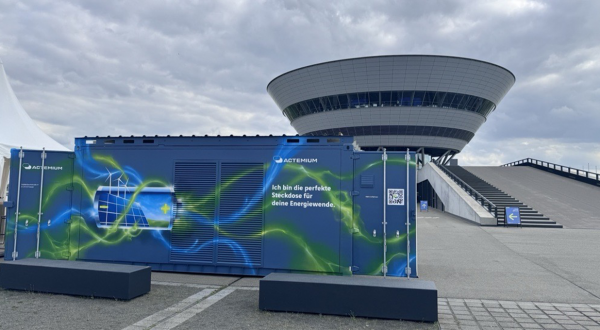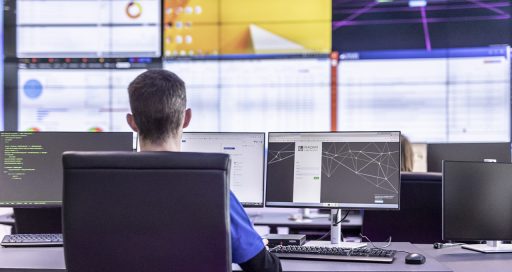“The industrial ecosystem is increasingly determined to accelerate its decarbonisation”
Reading time: 5 min
The industrial sector, which accounts for around one-fifth of European Union greenhouse gas emissions, must accelerate its energy transition. What progress have businesses made in the various aspects of this complex process? An analysis by Ali Hamdan, Environment Market Manager at VINCI Energies.

In your opinion, is the industrial ecosystem determined to accelerate its decarbonisation?
Ali Hamdan: We are seeing that the industrial ecosystem is increasingly determined to accelerate its decarbonisation. This mobilisation is apparent in sectors such as chemicals, metalworking, and also agrifood, where many companies are trying to reduce their footprint, optimise their energy efficiency and incorporate circular solutions into their processes.
These companies have several levers available at each stage of the decarbonisation process: regulatory audits, energy monitoring, waste heat recovery, electrification of industrial processes, renewable energies, and circular economy solutions. When offered technological solutions and effective tools, manufacturers are ready to actively engage in this transition. But the level of maturity varies depending on the sector and the size of each business.
What are the main obstacles to this movement?
A.H.: Culturally speaking, resistance to change and a lack of awareness of climate issues often limit engagement, especially in more traditional sectors. Added to which, although public policies do exist, they often lack clarity, stability and suitable incentives, which has a braking effect on initiatives. In technological and economic terms, the high cost of some solutions, such as CO2 capture or a conversion to renewable energies, plus what are seen as overlong return-on-investment times, are hampering their adoption.
Is carbon accounting more or less difficult depending on whether it involves Scope 1 or Scope 2?
A.H.: Scope 1 covers the greenhouse gases (GHGs) the company generates directly through its activities (factories, offices, installations, vehicle fleets, etc.), so Scope 1 carbon accounting is naturally the least difficult. Scope 2 concerns the indirect emissions resulting from energy purchased and consumed (electricity and heat/cold networks). These emissions are generated by energy producers and distributors away from the company’s installations. Measuring and acting on this scope may therefore be seen as more complex because these factors depend largely on the energy suppliers and the composition of the energy mix, over which the companies concerned have only indirect control. In France, the electricity mix is already strongly decarbonised – due to its high proportion of nuclear and renewable energy – which clearly benefits industry in terms of its Scope 2. This situation reduces the carbon footprint associated with electricity consumption and allows businesses to focus their efforts on optimising their energy consumption and making the transition to even more sustainable sources.
In other countries where the electricity mix is more carbon-intensive, reducing Scope 2 becomes more complex and requires actions such as the purchase of renewable energy certificates (the Guarantee of Origin type) or the installation of renewable energies on site.
Is Scope 3 the most difficult to invest in?
A.H.: Scope 3 includes indirect GHG emissions outside the company’s direct control because they occur upstream or downstream in the value chain (products bought and sold, transportation, etc.). Each company is therefore dependent on other stakeholders, their maturity levels, and how well equipped they are to account for their own emissions. Quite often, the lack of environmental data available from suppliers reduces a company’s room for manoeuvre and its ability to calculate, and therefore to optimise and reduce, its Scope 3 emissions.
The ambitious objectives of VINCI Energies
Decarbonisation is a key concern for VINCI Energies, which intends to play a key role in the energy transition and has set ambitious targets: a 40% reduction in its Scope 1 and 2 emissions by 2030 (compared with 2018).
“To honour these commitments, VINCI Energies is performing large-scale assessments, developing low-environmental-impact solutions, and adapting its infrastructure, projects and activities to improve their resilience to climate change,” says Ali Hamdan.
The results speak for themselves with the reductions in Scope 1 and Scope 2 emissions. VINCI Energies emitted 303 kT CO₂‑eq, which represents a 16% reduction in CO₂‑eq emissions between 2018 et 2023. Also in 2023, 30% of the electricity consumed was from renewable energy sources. The Group also strengthened its electric mobility capacity with a 77% increase in its fleet between 2022 and 2023.
09/15/2025





